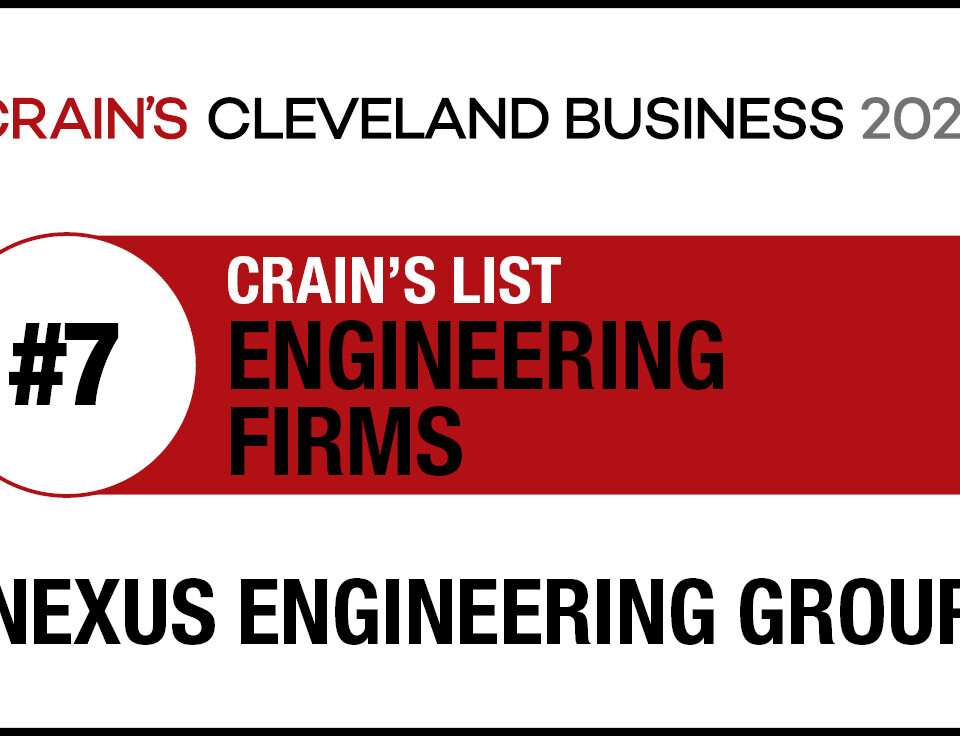By Brendan Shanley, Nexus Project Services Director
 Part early-warning system, part reputation-protector, earned value analysis (EVA) is the best friend of project and portfolio managers hoping to stay ahead of unexpected changes that can derail a project, and a career. At its core, Earned Value Analysis is a data-driven performance management methodology that assesses the health of a project schedule and budget. It can be leveraged along with a variety of project management tools to inform cost and schedule forecasts that can help improve the planning and budgeting of projects.
Part early-warning system, part reputation-protector, earned value analysis (EVA) is the best friend of project and portfolio managers hoping to stay ahead of unexpected changes that can derail a project, and a career. At its core, Earned Value Analysis is a data-driven performance management methodology that assesses the health of a project schedule and budget. It can be leveraged along with a variety of project management tools to inform cost and schedule forecasts that can help improve the planning and budgeting of projects.
In this article, I’ll explain more about what Earned Value Analysis is, how it works, and how project managers can use it to improve the outcome of their next project, and their next performance evaluation.
The benefits of earned value analysis
Engineering projects have a lot of moving parts. It can be difficult to have a handle on what tasks are done, what’s in motion, and what’s lagging. Earned Value Analysis helps managers confidently track a project’s progress, make informed decisions about resource and budget allocation, and communicate transparently to project stakeholders. It also provides early warning indications relating to cost overruns or schedule slippages.
Earned Value Analysis compares the planned amount of work with the actual work that has been completed (completed work is considered “earned”). Similarly, it compares the project’s planned budget with its actual spend.
As a “snapshot” of a project at a moment in time, Earned Value Analysis answers some important questions, including:
- What is the project status?
- How is the project performing against its budget?
- Based on cost of work performed, are we likely to overspend at the project’s completion?
- Is the project behind schedule?
- Is the project team productive?
Additional snapshots are then taken over the duration of the project to demonstrate any changes in project performance.
Formulas for calculating earned value

To implement earned value analysis on a project, the project manager must gather and calculate several points of data:
Budget information – typically transposed from the approved/authorized estimate
Baseline schedule – the approved project timeline that was authorized with the project estimate
Progress basis – a progress measurement basis is required to objectively measure the percentage of a project’s completion. This requires rules on credits for engineering, procurement and construction.
Change Management Plan – when there are changes to a project due to a change in scope, execution or other unexpected circumstances, it’s important you have a process to understand how to considered these changes in your budget and schedule.
With these foundations in place, you can calculate and assess the following metrics:
- Budget at Completion (BAC) — This is the total budget for the project, and/or its component tasks.
- Actual Cost (AC) — This is the total cost incurred on the date of the analysis. Put simply, it is the amount of money already spent on the project component being analyzed.
- Planned Value (PV) — This is the amount of work that has been budgeted for completion by the date of the analysis.
Formula: Planned Value = % complete (planned) * Budget at Completion
- Earned Value (EV) — This is the value of the actual work completed as of the date of the analysis.
Formula: Earned Value = % complete (actual) * Budget at Completion
- Schedule Variance (SV) — This is the difference between actual and planned work complete as of the date of the analysis.
Formula: Schedule Variance = Earned Value – Planned Value. A positive number means the project is ahead of schedule, a negative number means it is behind schedule.
- Cost Variance (CV) — This is the difference between actual and planned cost as of the date of analysis.
Formula: Cost Variance = Earned Value – Actual Cost. A positive number means the project is under budget, a negative number means it is above.
- Schedule Performance Index (SPI) — This shows the project’s progress against the planned timeline.
Formula: Schedule Performance Index = Earned Value / Planned Value. A number greater than 1 indicates the project is ahead of schedule. A number less than 1 indicates project schedule slippage.
- Cost Performance Index (CPI) — This shows the project’s cost efficiency.
Formula: Cost Performance Index = Earned Value / Actual Cost. A number greater than 1 indicates the value of the completed work is greater than the amount spent. A number less than 1 indicates the value of the completed work is less than the amount spent.
- Estimate to Complete (ETC) — This indicates the estimated cost to complete the project based on performance trends.
Formula: Estimate to Complete = (Budget at Completion-Earned Value) / Cost Performance Index
- Estimate at Completion (EAC) — This indicates the estimated cost of the project once completed based on performance trends.
Formula: Estimate at Completion = Actual Cost + Estimate to Complete
Putting it into practice: An earned value analysis exercise

Using these formulas, we will look at a simple project example with a 30-day timeline and a $12,000 budget at completion.
| Start/End Date | Budget at Completion |
| Jan 1-Jan 30 | $12,000 |
First earned value analysis
An Earned Value Analysis takes place ten days in, when work is planned to be 33% complete. As of this date of analysis, however the work is 40% complete, and $5,000 has been spent.
| Formula | Result |
| Actual Cost | $5,000 |
| Planned Value =
% complete (planned) * Budget at Completion |
$3960 = 33% * $12,000 |
| Earned Value =
% complete (actual) * Budget at Completion |
$4,800 = 40% * $12,000 |
| Schedule Variance =
Earned Value – Planned Value |
$840 = $4,800 – $3960 |
| Cost Variance =
Earned Value – Actual Cost |
($200) = $4,800 – $5,000 |
| Schedule Performance Index =
Earned Value / Planned Value |
1.21 = $4,800 / $3,960 |
| Cost Performance Index =
Earned Value / Actual Cost |
0.96 = $4,800 / $5,000 |
From this, we see that the project is ahead of schedule but running above budget. The Estimate at Completion based on the first Earned Value Analysis is indicating that the project is going to over run if performance remains the same going forward. The indicator provides an early warning for the project team to explore potential recovery plans to mitigate the potential over run.
Second earned value analysis
Ten days later, the project manager completed another Earned Value Analysis. At this point, the work is planned to be 66% complete. As of the date of analysis, the work is actually 70% complete, while $8,000 has been spent.
| Formula | Result |
| Actual Cost | $8,000 |
| Planned Value =
% complete (planned) * Budget at Completion |
$7,920 = 66% * $12,000 |
| Earned Value =
% complete (actual) * Budget at Completion |
$8,400 = 70% * $12,000 |
| Schedule Variance =
Earned Value – Planned Value |
$480 = $8,400 – $7,920 |
| Cost Variance =
Earned Value – Actual Cost |
$400 = $8,400 – $8,000 |
| Schedule Performance Index =
Earned Value / Planned Value |
1.06 = $8,420 / $7,920 |
| Cost Performance Index =
Earned Value / Actual Cost |
1.05 = $8,420 / $8,000 |
The result? In the ten days since the first analysis, the project has been brought back under budget. It also remains ahead of schedule.
Final earned value analysis
Earned Value Analysis is completed for project closeout after the conclusion of the project. At this point, the work is 100% complete, and $12,500 has been spent.
| Formula | Result |
| Actual Cost | $12,500 |
| Planned Value =
% complete (planned) * Budget at Completion |
$12,000 = 100% * $12,000 |
| Earned Value =
% complete (actual) * Budget at Completion |
$12,000 = 100% * $12,000 |
| Schedule Variance =
Earned Value – Planned Value |
$0 = $12,000 – $12,000 |
| Cost Variance =
Earned Value – Actual Cost |
($500) = $12,000 – $12,500 |
| Schedule Performance Index =
Earned Value / Planned Value |
1.0 = $12,000 / $12,000 |
| Cost Performance Index =
Earned Value / Actual Cost |
.96 = $12,000 / $12,500 |
Here, one day after the project’s completion, we see that the work was completed on time, but was over budget by 4%. Depending on whether or not the causes of the cost overrun are clear and what the established contingency was for the project, additional work may be needed to determine whether there are ways to prevent similar overages in future projects. However, with Earned Value Analysis the project team can identify problems early, and prevent more significant overages beyond the established contingency.
Earned Value Analysis advantages and limitations
Earned Value Analysis can be a powerful tool to help managers track and communicate the progress of their projects. When working with the methodology, it is important to understand both its advantages and limitations.
Earned Value Analysis Advantages
- Helps project managers see whether a project is on track for schedule and budget.
- Allows for objective comparison of multiple projects within an organization, helping project managers learn best practices.
- Gives project managers a tool to make data-driven decisions about a project. This includes reallocation of resources and budget to get a project back on track.
Earned Value Analysis Limitations
- Offers no way to measure the quality of work that results from a project.
- Earned Value Analyses are only as good as the data provided.
- The methodology requires robust processes to gather data in real time.
How Nexus can help
Nexus project services professionals use Earned Value Analysis to better understand and communicate their projects’ work progress and budget status. This, in turn, helps us make more objective decisions on resource allocation and keep stakeholders and project teams informed of project health. Nexus includes these services as part of any Nexus-managed project, and we offer holistic project controls and services to support your next project, and portfolio of projects, through procurement and construction.
We also can help guide prioritization of projects across client portfolios for organizations that lack project or portfolio management capabilities, and we can help clients plan and build these capabilities for their organizations. To learn more about how your organization can benefit from earned value analysis and a closer partnership with Nexus, contact our team today.




